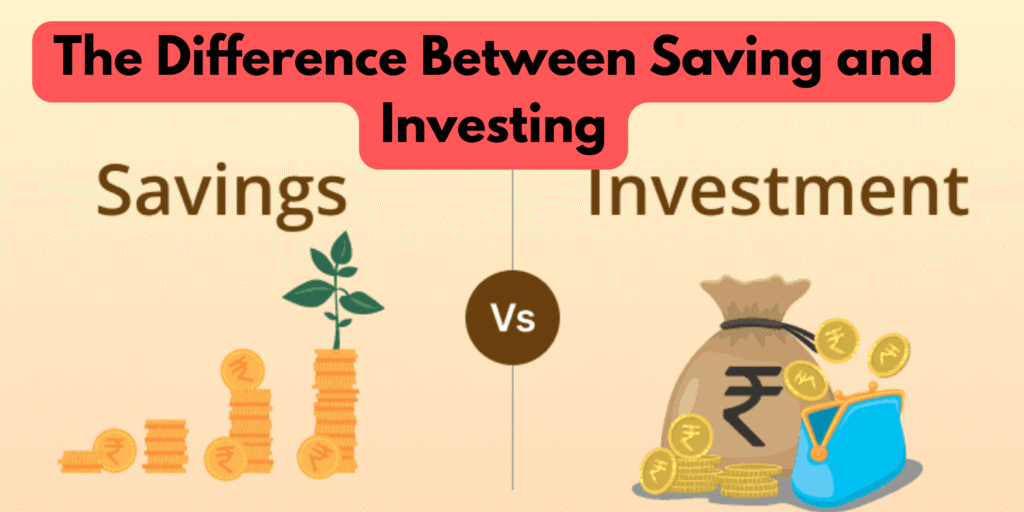Most of us grow up hearing, “You should save your money.” But today, you also hear, “You should invest your money.”
So what’s the difference? Aren’t they both the same?
Not really.
Understanding the difference between saving and investing is one of the first steps to building wealth — and it’s not complicated at all.
What Is Saving?
Saving is simply putting money aside — usually in a safe place — so that you can use it soon. It’s like storing money for short-term needs or emergencies.
You usually save for:
- An emergency fund
- Rent or bills
- A trip or festival expenses
- A phone or laptop purchase
Where do you save?
- Savings account in a bank
- Fixed deposits (FDs)
- Cash at home (not recommended, but common)
- Recurring deposits (RDs)
Main features of saving:
- Low risk
- Low returns (interest is small)
- Money is safe and easy to access
- Good for short-term needs
What Is Investing?
Investing means putting your money into things that can grow in value over time. You do it to create wealth, not just to store money.
You usually invest for:
- Buying a house in the future
- Retirement
- Children’s education
- Growing your money faster than inflation
Where do you invest?
- Mutual funds
- Stocks or shares
- Gold
- Real estate
- Bonds
- ETFs (Exchange Traded Funds)
Main features of investing:
- Medium to high risk
- Potential for higher returns
- Money may grow faster, but not guaranteed
- Better for long-term goals
The Key Differences
| Feature | Saving | Investing |
|---|---|---|
| Purpose | Safety, short-term needs | Wealth-building, long-term goals |
| Risk | Very low | Medium to high |
| Returns | Low (2%–6%) | Higher (can be 10%+ over time) |
| Liquidity | Easily accessible | May take time to sell or withdraw |
| Examples | Bank account, FD, RD | Mutual funds, stocks, real estate |
Which One Should You Do?
Both.
First, save for emergencies and near-term needs (like 3–6 months of expenses).
Then, once that’s done, start investing for your future goals.
Think of saving as your safety net and investing as your growth engine.
Final Thoughts
If you keep all your money in savings, it won’t grow much — and inflation will eat into its value.
If you only invest without any savings, you’ll be in trouble during emergencies.
So, do both.
Start small. Even ₹500 saved or invested every month makes a difference.
The earlier you begin, the better off your future self will be.

